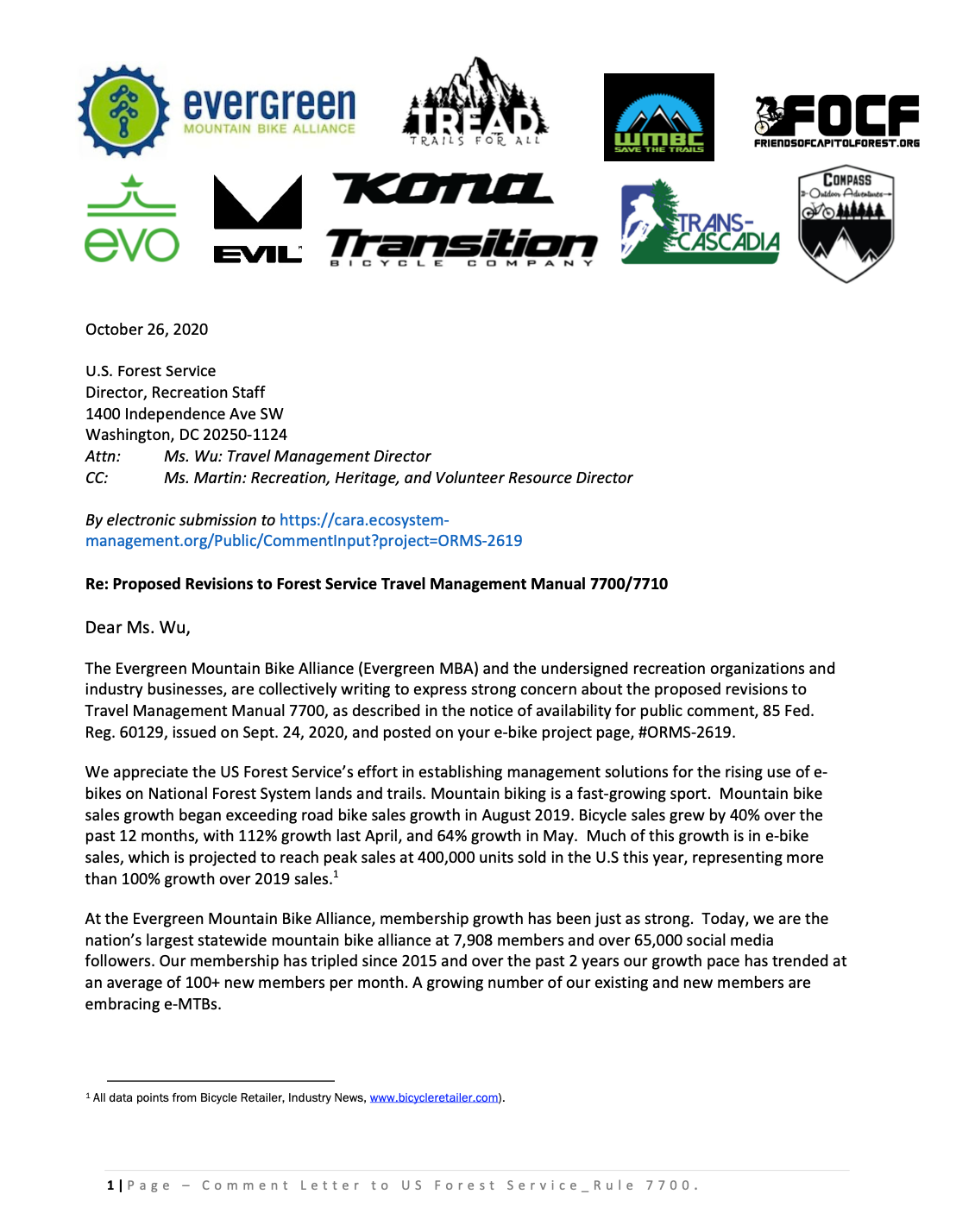Where can you legally ride your eMTB?
If you’re an eMTB user, "Where can I legally ride?" is probably your main question, and is one of the more confusing things as an eMTB owner. Evergreen works hard to ensure the best experience for MTB and eMTB riders alike. Check our Trail Guide for a list of fun (and legal) trails (from Seattle to Wenatchee) for eMTBers to explore. Evergreen does not regulate trail use for eMTBs, nor designate trails as open or closed to use. Land managers have full authority to regulate trails for eMTB use, so please remember: Always check land manager regulations before riding a new trail.
In addition to the trails listed below, all motorized trails in Washington are also open to eMTBs.
Click on the pins for more info
We do our best to keep this map updated. Please contact us to suggest an edit, addition, or removal of a trail.
By default, all non-motorized single-track trails are closed to eMTBs, unless signed open and permitted by the land manager. eMTBs are allowed on all motorized recreational trails, which encompass hundreds of miles across the state, including epic single track in many of our National Forests.
Do the right thing: If there is no signage designating a non-motorized trail as open to eMTB– Please Stay Off!
In Summary, Washington e-Bike Laws...
1. Establish a regulatory framework for e-bikes and their use.
2. Classifies e-bikes as bicycles, as long as its power output is no more than 750 watts, it has a saddle, includes fully operative pedals, and meets the criteria of the following classes:
- Class 1: E-assist only while pedaling, with a maximum speed of 20 mph.
- Class 2: Can be propelled solely by the motor, with a maximum speed of 20 mph.
- Class 3: E-assist only while pedaling, with a maximum speed of 28 mph, and has a speedometer.
3. Give land managers specific authority to regulate use of e-bikes on their properties.
4. Require prominent labeling for all e-bikes containing the Classification Number, Top Assisted Speed, and Motor Wattage.
5. Enable Class 1 and 2 e-Bike access to roads, bike lanes and non-motorized paved and improved surface recreational trails, unless specifically restricted or signed closed by the local jurisdiction.
6. Restrict eMTB access to single track natural surface trails– unless the land manager designates and signs the trail as “open to eMTBs.”
Washington State E-Bike Legislation Passed In 2018
Evergreen worked with industry stakeholders to develop a regulatory framework for e-Bikes and e-Mountain Bikes (eMTB). The 2018 Legislation was primarily focused on allowing e-bike access on paved non-motorized trails for urban commuting and recreational purposes.
Our focus in this initial legislation was narrow– we wanted to ensure that:
- The new law established a sensible regulatory framework that defined e-bikes as non-motorized bicycles according to three unique e-Bike classes.
- Enabled land managers to introduce eMTB access on non-motorized trails in locations where the new technology may be appropriate.
- e-Bike management objectives for paved or otherwise improved surface non-motorized trails were separated from eMTB management objectives for natural surface single track trails.
- The management baseline remained “closed to eMTBs, unless signed open,” to allow strategic introduction where appropriate, and avoid trail conflict.
- Limit single track trail access to Class 1 eMTBs only (human-powered/pedal assist up to 20Mph).
We are satisfied with the outcome of this initial legislation as it defines e-Bikes as bikes, gives land managers specific authority to implement e-bike policies, and addresses a critical need for urban bike commuters. This means Evergreen can now work with Land Managers to advocate for eMTB access in places where we believe it makes sense, and where it does not threaten trail funding eligibility, existing uses, or a quality trail experience for others.
How We Move Forward:
This initial legislation was a great first step to set the stage for future planning. As land managers have the authority to establish their own policy, we can work collaboratively in specific trail systems to work towards a good outcome.
We’re actively working to address the fast-growing eMTB community by:
- Advocating for Class 1 e-bike access to trails and gated non-motorized roads that are currently open to biking.
- Maintain a Separate Management Objective for e-MTBs vs. analog mountain bikes.
- Adopting a programmatic approach to trail impact evaluations by network or location, rather than trail-by-trail analysis.
- Asking for an “Open unless signed Closed ” trail management environment.
- Advocating for class 1 e-bike access to all existing and future new bike-specific trails (Raging, Tiger, Olallie, Duthie, Port Gamble, North Mountain, etc). These trails are either purpose-built for bikers or have a primary management objective (PMO) for bikes, and do not have prior multi-use conditions or stakeholders. E-bike use on PMO-bike trails does not create hiker/equestrian/conservation conflict and these trail provide an immediate location for e-bike users to recreate while additional trail networks are under review.
- Advocating for e-bike access to trails in areas where there is little to no option to legally ride.
- Advocating for legislation that restricts advertising of Class 2 and 3 e-bikes on non-motorized natural surface trails.
- Requiring industry labeling for Class 2 and 3 e-bikes as not legal on non-motorized trails.
- Encouraging agencies to classify e-bikes as non-motorized bikes, matching WA state legislation.
- Advocating for & encouraging consistency between State and Local Agencies to minimize user confusion.
How e-bike use is regulated is crucial to Evergreen for several reasons:
- To allay concerns by our partners in joint non-motorized recreation planning efforts;
- To prevent potential loss of current trail access if land managers choose to close trails to all “bikes” because e-bikes may not be deemed compatible with other non-motorized trail uses;
- To protect funding eligibility for future state, federal, and local "non-motorized" grants; and
- To ensure the ability for land managers to enforce the regulations.
How Can I Advocate For eMTBs?
As land managers weigh the choice of whether to allow eMTBs on their trails, it's helpful for them to hear from the public. Here's how to advocate:
- Research your trails. Learn who the land manager is of the trails you're inquiring about and take time to research the history of trail use there. Is there already a long-running history of bike use on the trails?
- Familiarize yourself with current rules. Educate yourself on existing trail restrictions. Are the trails multi-use? Mountain bike specific? Are they two-way trails or directional?
- Write your land manager. Make sure to make your note personal. Share a story of how you use your MTB or eMTB to access trails. Be concise and specific with your comments.
- Share your experience. Tell us where you'd like to see access open up for eMTBs. We're always interested in hearing from local riders and what their experience is out on the trail.
Letter from Evergreen submitted to the U.S. Forest Service on October 26th, 2020 as part of an open public comment period seeking input on revisions to USFS e-bike policy.

